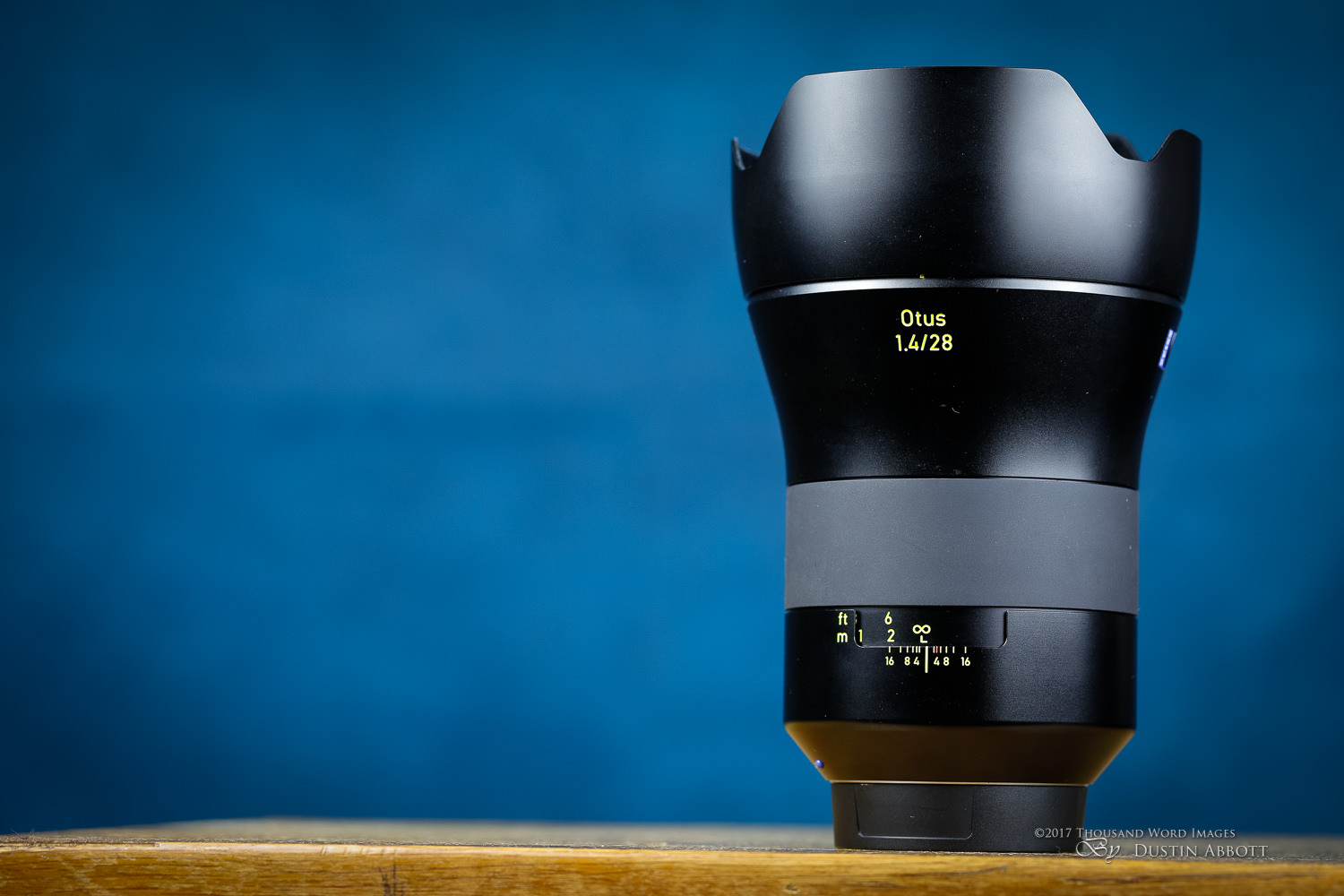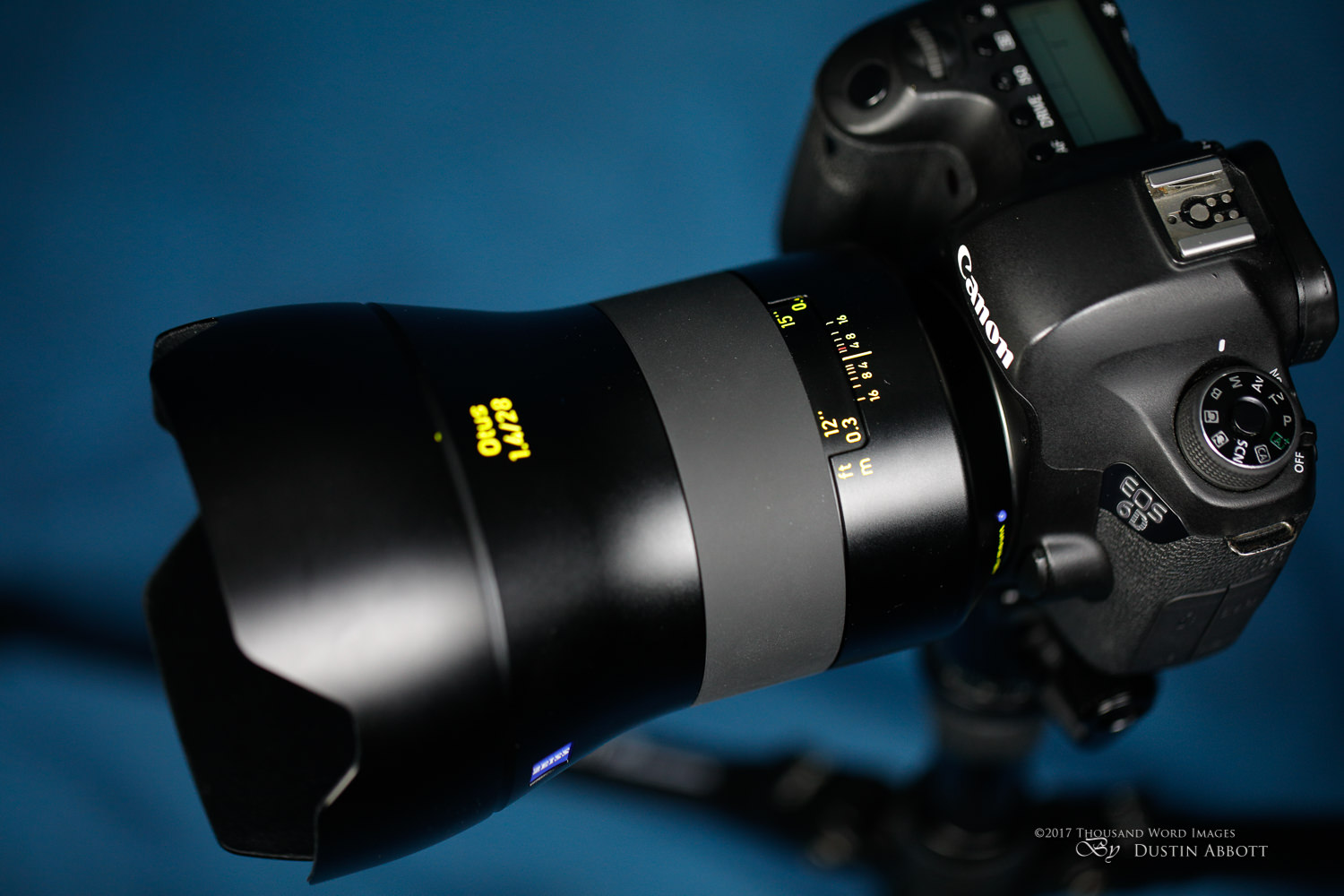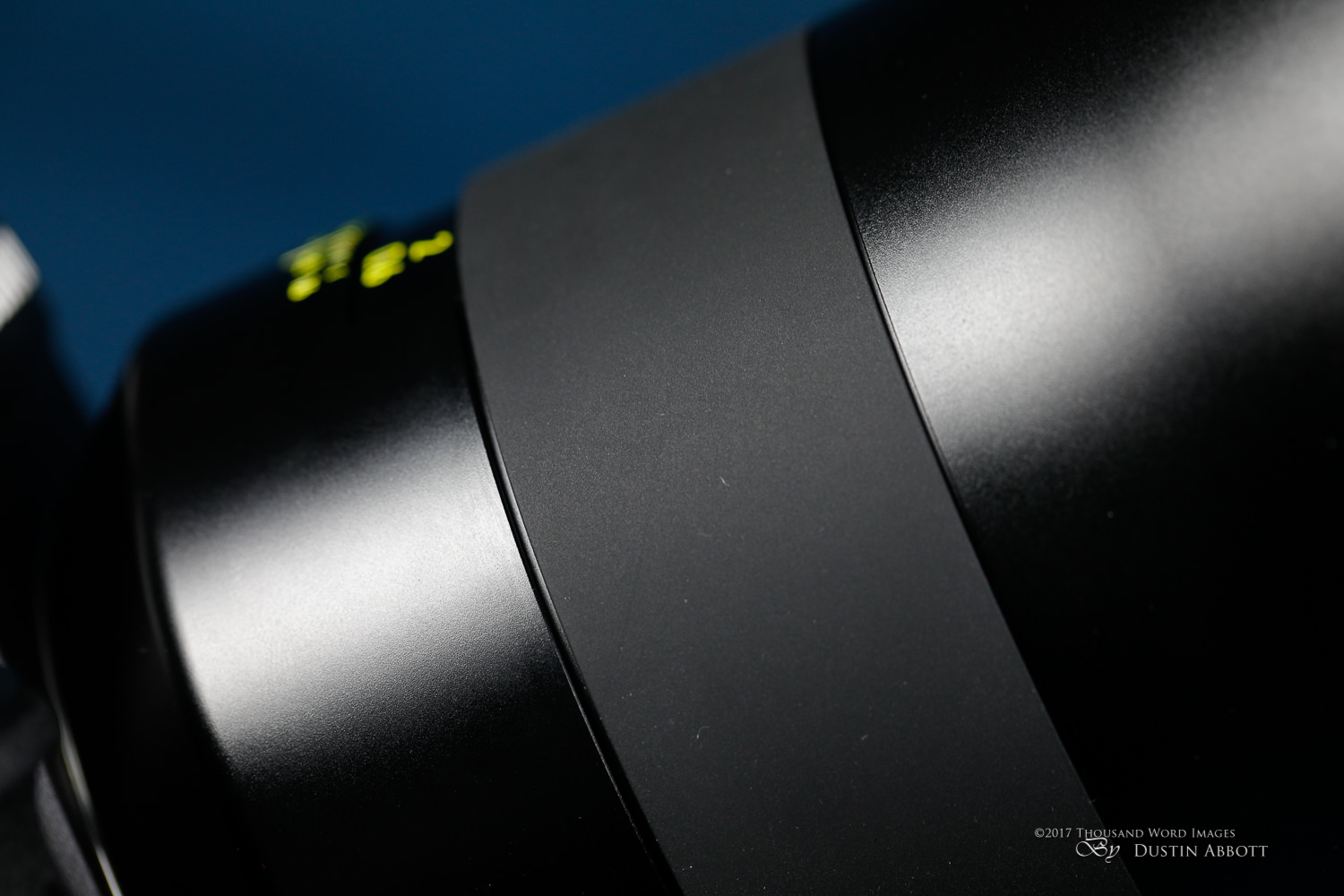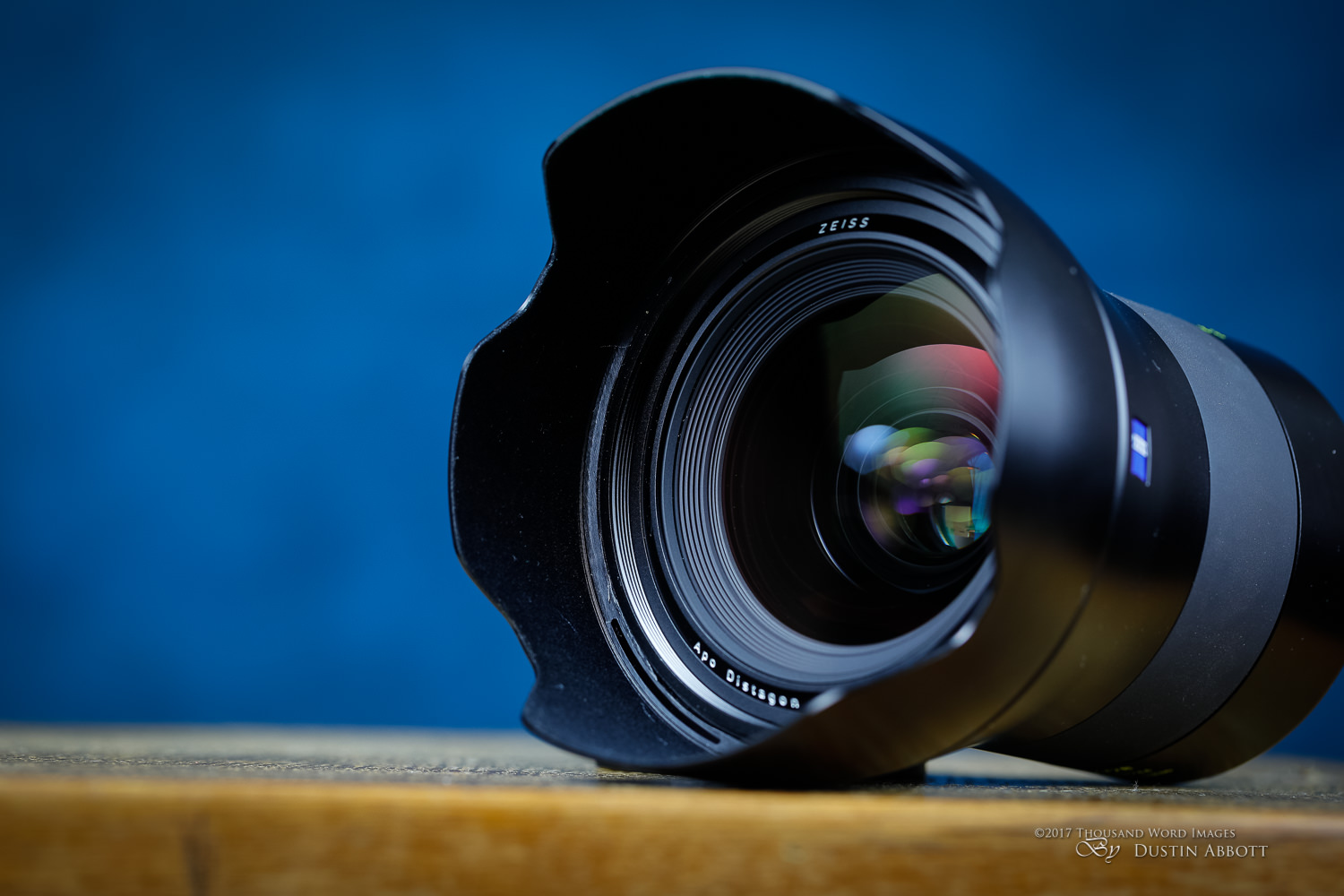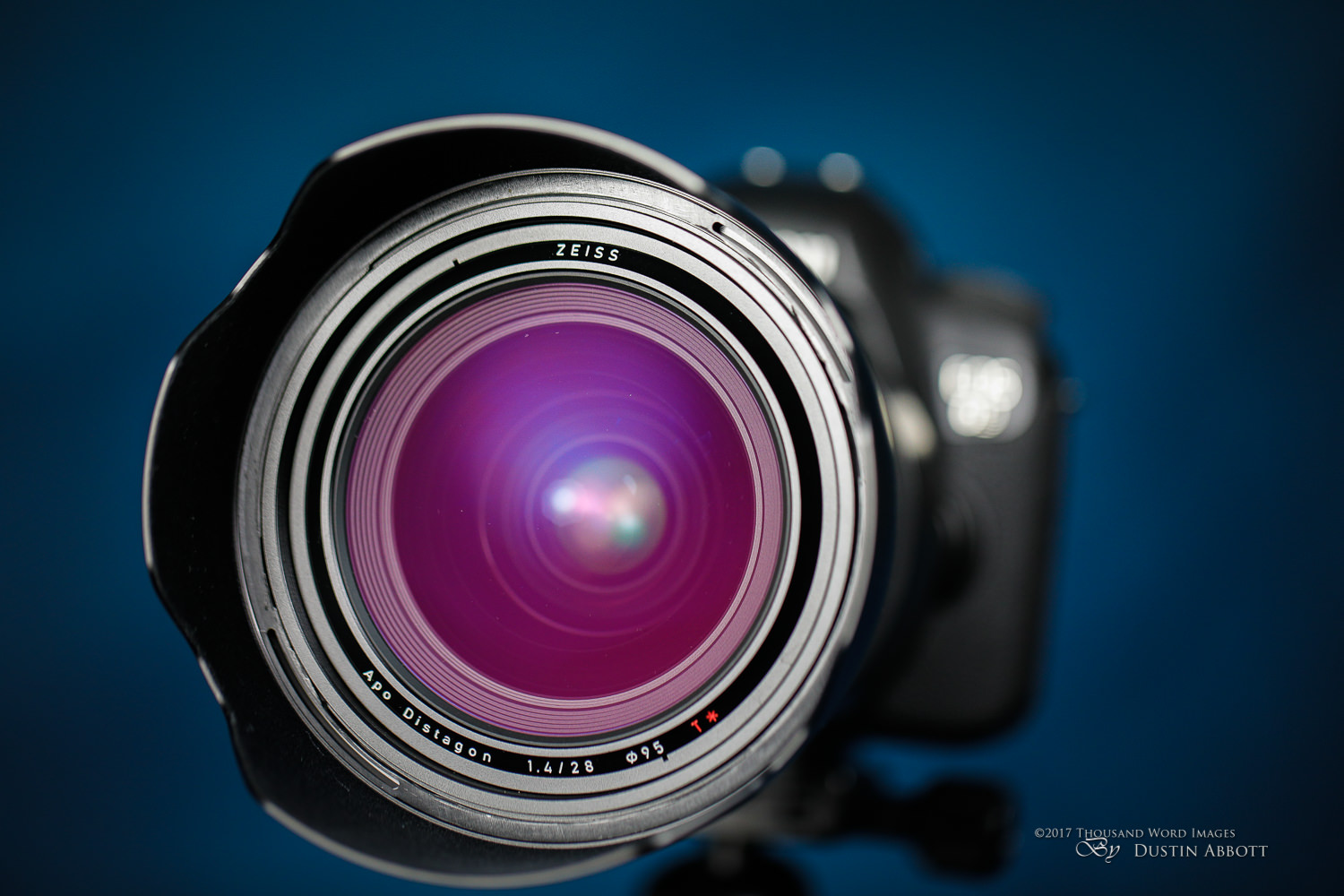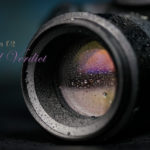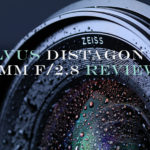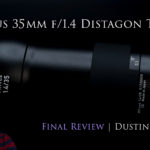Ludicrous Mode
American automaker Tesla has become one of the darlings of the auto industry with their high performance electric vehicles. One of the ironic aspects of Tesla’s Model S sedan is the ability to unlock “Ludicrous Mode”. Ludicrous Mode is a software enabled setting where everything goes into “hyperdrive” and the already high performance sedan suddenly accelerates at a speed few hypercars can match. Does it have a practical purpose? Not really, but man, is it ever one fantastic watercooler topic! I was reminded of Ludicrous Mode when I went out for my first photo hike with the Zeiss Otus 28mm f/1.4 APO Distagon T* lens. There isn’t a shred of practicality in this lens (for many shooters), but man, does it ever make for a great watercooler topic! If your tastes run toward extremes, then the Otus 28mm just might be the lens for you!
During the film era 28mm was a valued focal length, but it seems like modern tastes run more towards either 24mm or 35mm in this general range. I did review a 28mm prime last year, but it was a Canon EF-M lens designed for APS-C mirrorless where the angle of view is more like a “normal” 45mm prime lens. The Otus 28mm is designed for full-frame format DSLRs, but can also be used with APS-C models where it will provide a 44.8mm equivalent focal length. The lens performs well optically as a standard lens on APS-C, but frankly it feels like serious overkill for that kind of application, and this is anything but a walkaround kind of lens. In the realm of SLR lenses, the Otus 28mm has the widest maximum aperture of f/1.4. I did find a Leica rangefinder 1.4/28 (with an even more eye-watering price tag of nearly $6200 USD), but that’s not an apples-to-apples comparison. The widest aperture previously available for Canon shooters is the Canon EF 28mm f/1.8, but a quick like at Bryan Carnathan’s test results show that this lens should not even be mentioned in the same paragraph as the Otus 28mm.
Prefer to watch your reviews? Here’s a thorough treatment of the lens here:
There isn’t really an appropriate frame of reference for the Otus 28mm. The Zeiss Otus series has always been about extremes, with first the Otus 1.4/55mm (my review here), a lens that completely burst the ceiling for what an SLR 50mm(ish) lens could accomplish (and how much one could cost), which was then followed by the Otus 1.4/85mm (my review here) which was a lens that impressed me like no other had before. The 1.4/55 retailed for right under $4000 USD, followed by the 1.4/85mm at right under $4500 USD. The 1.4/55mm was the biggest 50mm lens, and then the Otus 1.4/85mm was larger still and the largest 85mm. When I heard that the next lens in the Otus series would be a 28mm, I assumed that it would be smaller and cheaper than the previous two lenses. Boy, was I wrong!
The Otus 28mm is both larger and more expensive than either of the previous Otus lenses, with an exceptional price tag of nearly $5000 USD (see the comparison chart below).
A viewer on my YouTube channel called this a “Home Refinance Lens”, and I thought that an apt description for the average photographer. But this lens isn’t for the average photographer…not even a little bit.
The Otus 28mm weighs almost 1.4 kilograms (3.06lb/1390g) compared to the 1.03 kg of the 1.4/55 and the 1.2 kg of the 1.4/85mm. It is the largest Otus lens in diameter at 4.28”/108.9mm and only very slightly shorter than the 1.4/55mm at 5.39”/137mm. It has the largest front filter thread at 95mm compared to 86mm (1.4/85) and 77mm (1.4/55). It has the most complicated optical formula of the series with 16 elements in 13 groups. I feel in many ways the first two Otus lenses shared far more similarities in their optical design (and performance) when compared to the Otus 28mm.
Otus 28mm Build Quality and Handling
You can see the Otus 28mm up close and personal in this examination of the build and design:
The Otus series is built to the most exacting standards of any Zeiss lens in history, and Zeiss is already renowned for the exceptional build of their lenses. The design tolerances are very, very tight, and when you handle an Otus lens you know that it is exquisitely made. The construction is all metal and glass (Zeiss doesn’t do plastic!) and the Otus design language, while now familiar, is nonetheless beautiful. A satin anodized black finish with a few discrete blue Zeiss badges here and there (very classy). The etched printing on the barrel and lens hood is filled in with a fairly bright yellow paint, which was chosen because of the high visibility in low lighting (where Otus lenses thrive). There is a distance window with distance markings along with hyperfocal scale markings at f/4, f/8, and f/16. The barrel on the Otus lenses is very resistant to marking or fingerprints, which helps the lenses continue to look beautiful even with use.
The focus ring is broad (1.25”/3cm) and finished in a rubberized surface that offers a nice amount of grip and feel. The Milvus series involves the distance scale on the ring, and I prefer the simpler, more functional design on the Otus lenses. The focus action is, put simply, perfection. Perfectly damped and even throughout the nice 120 degree focus throw, with plenty of space for accuracy and yet the nature of the focal throw allows for quick changes.
When you look toward the bayonet mount you will note that one thing the Milvus series has over the Otus line is the addition of weather sealing, and, since the Otus 28mm launched after the introduction of the Milvus series I’m somewhat surprised (and disappointed) that Zeiss has persisted in not including weather sealing here. On the Nikon version of the lens you will find a manual aperture ring, but the Canon version I’m reviewing here has a fully electronic aperture iris that is controlled from within the camera just like any autofocus lens. On either version of the lens there is full electronic communication, meaning that all meter modes operate perfectly and full EXIF data is communicated. The only difference between this lens and most others you might use is that it requires you to manually focus it. A focus confirmation chip is included that will beep and light up the appropriate focus point when the camera thinks focus has been achieved. Don’t put too much stock in this, however. It helps get you in the ballpark, but is far from full proof. In most situations Live View magnification is the most consistent way to achieve accurate focus.
Looking towards the front of the lens you find that the petal-shaped lens hood is designed purposefully as a part of the lens design. I’ve really appreciated how Zeiss has spearheaded a new movement where lens hoods look like part of the overall design rather than a tacked-on accessory. The barrel design flows into the lens hood and looks complete with the lens hood mounted. The hood is also all metal (with such tensile strength that you can hardly squeeze and compress it) and has a flocked interior to keep stray light from bouncing around. It will reverse for storage, but be warned that the circumference of the lens hood is pretty huge and it hardly fits in a standard slot in your lens bag. One area where I prefer the lens hood design over the Milvus line is that I find the gap between the lens barrel and lens hood can change with Milvus lenses depending on where the lens is focused, while the Otus lenses retain a tight tolerance no matter where focus is.
A very large pinch lens cap covers an extremely large 95mm front filter thread. 95mm filters aren’t cheap, but, if you can afford this lens you can afford a filter for it. It’s interesting to note that 95mm filters are actually often cheaper than 86mm filters (a size several new 85mm lenses are sporting) due to being a bit more common. I highly recommend having at least an ND filter, as f/1.4 is a very bright aperture and some lighting conditions will exceed the maximum shutter speed of your camera. If you want to use f/1.4 in those settings, you will need to limit the amount of light reaching the camera sensor by using a ND filter.
Optical Design
The is an Apochromatic lens, and as such has better correction of chromatic and spherical aberrations than a typical lens (read more here), which is part of what you are paying for here. An apochromatic design makes use of eight anomalous partial dispersion glass elements to nearly eliminate chromatic aberrations in order to reduce color fringing and color artifacts in front of and behind the plane of focus. It is a Distagon design, which has the disadvantage of producing a larger lens but the key advantage of producing a better wide angle lens with lower distortion. Distagon lenses typically become much sharper when stopped down, and since the Otus 28mm is already very sharp wide open it should let you know what a monster this lens is stopped down. Zeiss says, “A floating element design places variable air gaps between select lens groups to realize consistent performance throughout the focusing range, from 11.8′ to infinity.”, a claim I found true in my tests as the lens seems to be consistently sharp at any focus distance.
The lens also has Zeiss famous T* coatings on each lens surface to help minimize reflections in order to provide greater image clarity, contrast, and color fidelity.
Though large and heavy, the lens is beautifully designed and lovely to look at. It’s a bit heavy in the field, but the handling is also pretty much perfect. If I have any quibble (outside of the lack of weather sealing) it is that on Canon bodies I’m relegated to mostly using Live View for critical focus, and a lens this heavy is a little harder to support when held away from your body. I’ll say it again: modern DSLRs are not really designed with manual focus lenses in mind.
Otus 28mm Image Quality
I’ll preface this section by saying that Otus 1.4/28mm is different from either the 1.4/55 or 1.4/85. Those lenses were characterized by an extremely strong contrast and a highly defined three dimensional rendering. The Otus 28mm exhibits a flatter profile that after careful testing impresses me more with color accuracy and exceptional correction of optical defects. The lens impresses more with perfection than art, and as such will appeal to a certain demographic more than others. I’ll explain this a little further in my summation. I’d encourage you to watch this video segment where I look more in depth at the image quality from the lens.
Resolution
The only 28mm lens that I personally own is a Super-Multi-Coated Takumar 3.5/28mm that is probably older than me. As you can see from the photo below, it is like a drop in the bucket in size compared to the Otus beast.
I did a few comparisons just for the fun of it, however. I’m sure it won’t surprise anyone to discover that the Otus is in a completely different league optically…even if we compare it at f/1.4 (wide open) versus the f/3.5 (wide open) of the SMC Takumar. Here’s some image crops from left to right across the frame.
I do own another lens that I feel is a more apt comparison, however, even if it doesn’t have the same focal length. The Canon EF 35mm f/1.4L II is the closest thing to an autofocusing Otus lens that I’ve seen. When I reviewed the lens I looked at the images that I got from the 35L II and felt that they looked more “Otus-like” than anything I’d ever seen from a Canon lens before due to both the exceptional microcontrast at wide apertures and the near complete elimination of chromatic aberrations due to the new Blue Spectrum Refractive element. I believe the 35L II to be the best moderately wide lens out there, so it seemed like a fair comparison despite the slightly narrower focal length.
I did a number of direct comparisons in different environments, which I cover in this video review. If you would prefer to read my observations…
- Compared side by the side the Otus is just a slight bit sharper at wide apertures. It seems to have slightly better contrast in that a bit more detail is seen where there is a light falloff or areas of high contrast. Here are 1:1 crops from left to right across the frame.
- The Otus produces slightly more neutral, accurate color, with the 35L II coming off a bit cool by comparison.
- Neither lens shows the slightest bit of color fringing, though the Otus has absolutely no bleeding in areas of contrast (haze), whereas the Canon has just the faintest bit.
Stopping the lenses down produces exceptional results from both lenses, but the Otus is demonstrably superior in the corners. At f/5.6 the Otus is delivering perfectly even sharpness across the frame, and when I used it for a commercial project in Mont Tremblant, Quebec, I was blown away by how much detail was resolved across the frame at smaller apertures.
The combination of that perfectly corrected image along with maximum resolution will allow for incredibly high resolution work to be done, and, frankly, I feel this is the place where the lens makes the most sense. It’s incredibly good at f/1.4, yes, but for those demanding the maximum resolution (billboards, advertising, etc…) the Otus 28mm will pay for itself by allowing you to squeeze that extra 1 or 2% that might be a difference maker for you.
I also felt that the lens’ superior handling of light and shadow information helped deliver an image with a lot of latitude for imposing one’s vision in post processing. I feel that in many ways the lens is tuned to produce a flatter image profile than the 1.4/55mm or the 1.4/85mm. I never felt the need to dial in more contrast with those lenses, but I do with images from the Otus 28mm. For you video users it is somewhat akin (though less extreme) to shooting in LOG. You have a very full range of information there to process. Look at the image below:
Though properly exposed, there is still a lot of space on the histogram in either direction. I moved the White slider in Lightroom to +58 and the Black level slider down to -38 to get this result.
This is either good or bad (depending on what you are looking for). It gives you a lot of latitude for processing images, but neither do images have the same impact straight out of camera as others in the Otus series.
In terms of pure resolution the 1.4/28 definitely lives up to the standard set by the Otus line. Here’s an f/1.4 image along with a 1:1 crop. Incredible detail!
Aberration Control, Vignette, Distortion, and Flare Resistance
As previously noted, the conversation about chromatic aberrations is a brief one. There aren’t any. You can see the faintest bit of spherical aberrations at wide apertures, but they are almost perfectly controlled as well. This lens is designed and engineered to eliminate chromatic aberrations, and it essentially perfectly succeeds in that task.
Vignette control is less impressive. I’ve seen very few Zeiss lenses that don’t suffer from rather strong vignette (that appears to be their weakness). I’m surprised by the amount of vignette at f/1.4 when I consider the fact that the lens has a 95mm front element (which is the same front element size as most of the 150-600mm telephoto variants!!). It does clear up a lot by f/2 and is perfect for field use by f/2.8. In some scenes at f/1.4 you will strongly see the evidence of vignette, though.
The lens also exhibits a mild bit of distortion. Again, I was mildly disappointed by this, as I felt that this could be better. The far less expensive Sigma 24mm f/1.4 ART lens exhibits less distortion despite having a wider focal length and an equally large maximum aperture. The Canon 35L II also does a slightly better job with this. The distortion is mild, however, and easily corrected through the use of the standard profile in Lightroom or ACR. Here’s a look at a shot before and after correction for distortion and vignette (at f/1.4).
Flare resistance is exceptional. This is pretty amazing when you consider how large that front element is! I shot in extraordinarily bright conditions (a ski resort on a bright, sunny, cloudless day).
I was metering at 1/1000th of a second even with the lens stopped down to f/5.6. Despite the extreme brightness, I shot with the sun right in the frame and got essentially perfect results. No loss of contrast, no haze, no ghosting. This is an exceptional performance, and another key asset for those that will want to do projects with bright light or backlighting.
Those looking to use the lens for astro work will find a mixed bag. There is a mild bit of coma, and, as already mentioned, there is a fairly strong vignette at f/1.4. Stopping down to f/2 will give you a superior result in many situations, with far less vignette and a bit less coma, not to mention near perfect sharpness across the frame.
In conclusion, the vignette wide open and the distortion are my only real optical complaints. The lens is exceptionally well corrected for most typical optical defects. When I directly compared the Otus 28mm to the 35L II I found that it was a bit better in near every category (actually a lot better in the flare resistance category). The 35L II is an exceptional lens, but the Otus is better, which ought to give you an idea of how good the Otus ultimately is.
Bokeh Quality
While the Otus 28mm has a wonderfully bright maximum aperture of f/1.4, the focal length dictates that this really isn’t a “bokeh lens”. The quality of the bokeh you can produce is quite nice, though there is a bit of busyness in highlight circles (less than the 35L II, though). I saw a few image where I thought the bokeh was a bit busy, while others looked very nice. This image I took for a spa shows the nice commercial applications for the Otus 28mm’s bokeh.
Here a few other real world bokeh samples.
The lens can focus down to right under a foot (0.3 meters) and produces a useful but not exceptional maximum magnification of 0.16x. The 35L II produces a much more useful 0.21x magnification, though. Here are both lenses at their minimum focus distance:
Suffice it to say that there will be few applications where you will completely blur out a background with this kind of focal length…even at f/1.4. What is incredible, however, is the amount of resolution at minimum focus. Here is a pixel level shot (1:1) at f/5.6:
Conclusion
Over the course of my review I saw two different perspectives on the Zeiss Otus 28mm f/1.4. Much like a Lamborghini, it doesn’t make much sense as a daily driver. It is too big, too heavy, and too expensive. It’s too cumbersome to use as a general purpose lens. For everyday use I would prefer the Canon 35mm f/1.4L II that I already own. Having fast, accurate autofocus means that it is a far more practical tool as a daily driver. A lot of people won’t “get” the Otus 28mm at all…and I can understand why.
But I borrowed this lens from Zeiss Canada (thanks!!) not only for this review but to shoot a commercial project for the prestigious Fairmont hotel brand. It was in that application that I understood the place for the Otus 28mm. I worked more deliberately, often from a tripod, and my goal was to produce highly detailed, pleasing images for my client. In that setting I gained a deeper appreciation for the incredibly well corrected images coming out of the Otus. The Otus 28mm is a specialist’s tool, but when used as such the lens makes much more sense. Is it worth nearly $5000 USD? That all depends what you use it for. But if you need (or just want) that extra little bit that other lenses can’t provide, the Otus series may just be for you.
P.S. Zeiss is selling more Otus lenses than what you might think…
Pros:
- Incredible amount of resolution wide open, and yet more when stopped down
- Incredibly sharp at all focus distances, from minimum to infinity.
- Absolute control of chromatic aberrations
- Incredible flare resistance
- Extremely accurate color rendition
- Excellent light falloff control
- Built to the most exacting standards
- Perfectly damped manual focus ring
Cons:
- Incredibly large and incredibly expensive
- Heavy vignette wide open
- Some distortion
- No weather sealing
- 95mm front filter thread
Gear Used:
Canon EOS 5D Mark IV (5D4)
Canon EOS 6D DSLR Camera (Body Only)
Zeiss Otus 1.4/28mm: B&H Photo | Amazon
Super Precision Matte Eg-S Interchangeable Focusing Screen
Adobe Lightroom CC Software for Mac and Windows (Boxed Version)
Adobe Photoshop Creative Cloud 1-Year Subscription
Alien Skin Exposure X2 (Use Code “dustinabbott” to get 10% anything and everything)
Purchasing your gear through B&H and these links helps fund this website and keeps the articles coming. Thank you for your support.
Great News! I can now offer a 5% discount on all purchases at Amplis Foto, Canada’s Leading Photographic Supplier. Please enter discount code: AMPLIS52016DA in your cart. It is good for everything in your cart, and is stackable with other coupons, too! It will take 5% off your entire order! Proceeds go towards keeping this site going and providing you with new reviews!
Check me out on:
Google+: | Facebook: | Twitter: | Flickr: | 500px: | Sign Up for My Newsletter :


